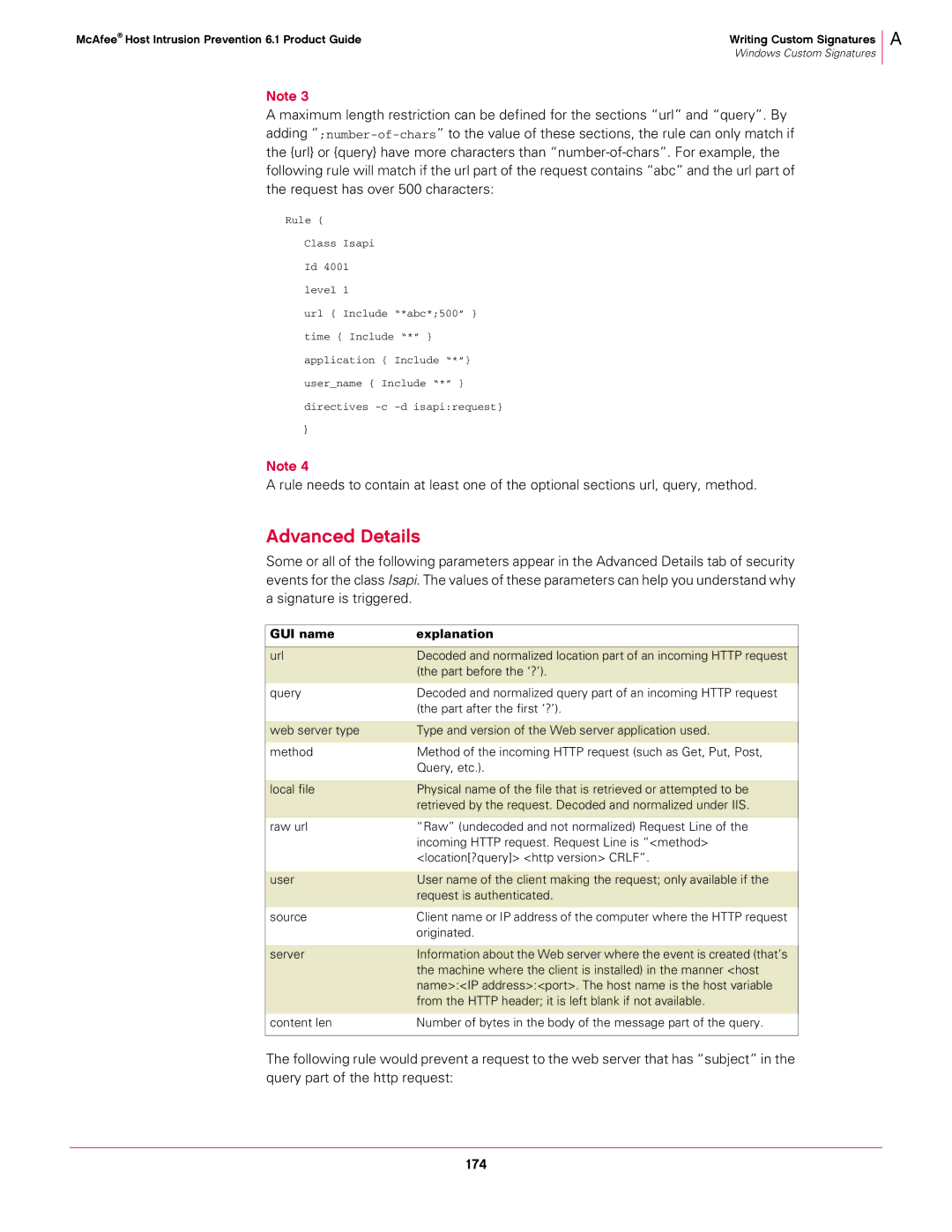
McAfee® Host Intrusion Prevention 6.1 Product Guide | Writing Custom Signatures |
| Windows Custom Signatures |
A
Note 3
A maximum length restriction can be defined for the sections “url” and “query”. By adding
Rule {
Class Isapi Id 4001 level 1
url { Include “*abc*;500” } time { Include “*” } application { Include “*”} user_name { Include “*” } directives
}
Note 4
A rule needs to contain at least one of the optional sections url, query, method.
Advanced Details
Some or all of the following parameters appear in the Advanced Details tab of security events for the class Isapi. The values of these parameters can help you understand why a signature is triggered.
GUI name | explanation |
|
|
url | Decoded and normalized location part of an incoming HTTP request |
| (the part before the ‘?’). |
|
|
query | Decoded and normalized query part of an incoming HTTP request |
| (the part after the first ‘?’). |
|
|
web server type | Type and version of the Web server application used. |
|
|
method | Method of the incoming HTTP request (such as Get, Put, Post, |
| Query, etc.). |
|
|
local file | Physical name of the file that is retrieved or attempted to be |
| retrieved by the request. Decoded and normalized under IIS. |
|
|
raw url | “Raw” (undecoded and not normalized) Request Line of the |
| incoming HTTP request. Request Line is “<method> |
| <location[?query]> <http version> CRLF”. |
|
|
user | User name of the client making the request; only available if the |
| request is authenticated. |
|
|
source | Client name or IP address of the computer where the HTTP request |
| originated. |
|
|
server | Information about the Web server where the event is created (that’s |
| the machine where the client is installed) in the manner <host |
| name>:<IP address>:<port>. The host name is the host variable |
| from the HTTP header; it is left blank if not available. |
|
|
content len | Number of bytes in the body of the message part of the query. |
|
|
The following rule would prevent a request to the web server that has “subject” in the query part of the http request:
174
